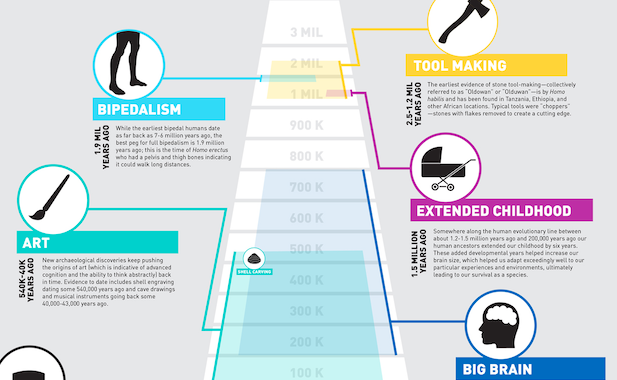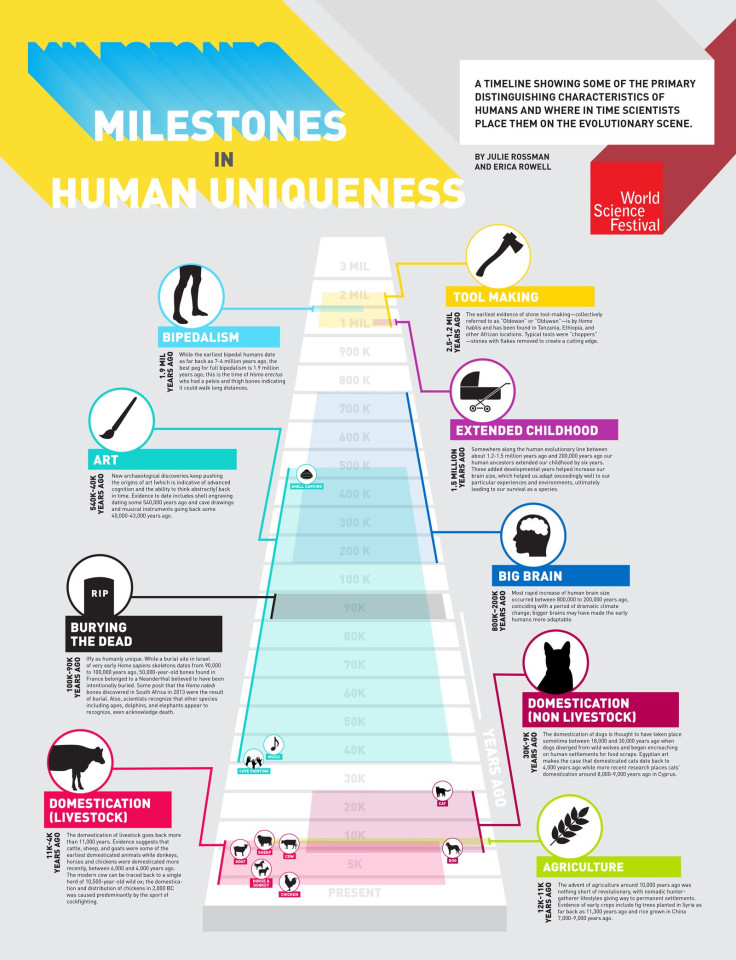Human Evolution: From Walking To Farming, Here's How We Became The People We Are Today

The story of how our ancestors became human is complex and marked by milestones that have occured over six million years. From developing pelvis and thigh bones for walking long distances, to establishing storytelling skills through cave drawings, humans have made leaps and bounds. Luckily, fossils provide modern-day excavators deeper insight into how we became the people we are today.
According to the Smithsonian National Museum of Natural History, the human skull is enough to determine the brain size and facial features of our ancestors, while the entire skeleton is evidence of how and when structural took place — but the steps to how we became highly intelligent and socialized animals weren’t always as clear. That is, until the 1912 discovery of the Piltdown Man, or the fossil of a human skull with an orangutan’s jaw structure that allowed excavators to piece together the intricate puzzle that is evolution.
Human skull sizes expand far beyond primates, and between 800,000 to 200,000 years ago, there was a rapid increase in human brain size, giving way to a more adaptable and powerful conceptual thought process. Soon after humans started to bury the dead, domesticate animals, and spearhead agriculture as some of the first steps toward a more culturally rich society.
Below, an in-depth, illustrated look at human uniqueness, from the World Science Festival.

Published by Medicaldaily.com



























